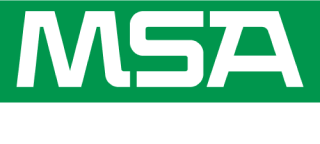
Workplace safety is continuously evolving, with technological advancements playing a significant role in enhancing the well-being of workers, particularly in industries where hazardous gases are present. Among these innovations, connected gas detection devices have emerged as one of the game-changers for safety managers and Environmental, Health, and Safety (EHS) professionals. This article will explore some ways that connected gas detection devices can help enhance worker and worksite visibility, help simplify compliance, and ultimately help EHS professionals establish comprehensive connected safety programs with the data and insights to reach both short and long-term safety and productivity goals.
The Power of Connected Gas Detection Devices
Connected gas detection devices – meaning those that come with out-of-the-box cellular connectivity to leading national networks PLUS automatic integration with cloud-based software solutions – can provide safety managers with the visibility, data, and reporting to help enhance worker safety and awareness, simplify regulatory compliance, streamline fleet management, and improve training and education.
Most connected gas detection devices currently on the market can operate as wearable technologies, designed to be worn by workers in industries including but not limited to oil and gas, utilities, and construction, where exposure to dangerous gases is a risk or potential risk. These wearable devices can be easily attached to a workers’ – including lone workers’ – clothing or personal protective equipment (PPE), to help ensure safety and visibility. By providing real-time monitoring of gas levels, worker location, and behavior in addition to other practices and technologies, these connected devices can help build a proactive, adaptable gas detection safety program.
Here are some of the benefits of these connected gas detection technologies:
Enhanced Worker Safety and Awareness
Connected gas detection devices can help an organization significantly improve worker safety by providing real-time monitoring of gas levels and worker location. For example, a lone worker in a confined space or in upstream or midstream operations may encounter hazardous levels of gases without the ability to respond or to notify others. With a connected gas detection wearable, safety managers can monitor the situation remotely and take immediate action if gas levels become or get close to becoming dangerous. This proactive approach to safety can help prevent accidents and foster a culture of safety within the organization.
Simplified Regulatory Compliance
Compliance with industry regulations is part of maintaining a safe work environment and avoiding costly fines. Connected gas detection devices can help to simplify regulatory compliance by automating processes and reducing the time spent on manual reporting and record-keeping tasks. In addition, by providing real-time and historical data on worker detector usage, safety managers can identify specific behaviors to correct, and more quickly and easily ensure that their workers are accountable and that their organization is adhering to regulatory standards.
Streamlined Fleet Management
Managing a fleet of gas detection devices can be complex and time-consuming. Connected gas detection devices can help simplify this process by providing safety managers with a centralized platform to manage their fleet. With cloud-based software solutions, safety managers can quickly and efficiently assign devices to individual workers, monitor calibration schedules, deploy over-the-air updates, and ensure that devices are properly maintained. This level of control can improve device reliability and help reduce the risk of accidents caused by malfunctioning equipment.
Improved Training and Education
Connected gas detection devices provide safety managers with a wealth of data that can inform safety training and education initiatives. By analyzing worker location and detector usage data, safety managers can begin to identify trends and areas where additional training may be necessary. This targeted approach to safety education can help ensure that workers have the knowledge and skills to operate safely in hazardous environments.
Connected Gas Detection Devices in Action
Not sure what implementing a connected safety program could look like for you organization? Take the case of Rimrock Energy, a natural gas processing facility in Colorado, for example. Rimrock faced challenges with their portable gas detectors, including durability, battery life, and maintenance issues. These issues increased costs and created concerns about the devices’ reliability and compliance.
Rimrock sought a new portable gas detection solution that would be durable, reliable, and capable of automated compliance and fleet management, as well as provide reliable digital data and enhanced situational awareness for lone workers. As a result, they chose the MSA ALTAIR io™ 4 Gas Detection Wearable and Grid cloud-based software as part of MSA’s Connected Work Platform.
This solution allowed them to support their gas detection program with reliable connected devices, easily track compliance, streamline fleet management, and enhance visibility and alarm awareness. As a result, Rimrock achieved an approximately 75% reduction in detector maintenance costs, nearly 100% standard operating procedure (SOP) accuracy with compliant detectors, streamlined compliance management and tracking, automated bump and calibration tests, and an enhanced lone worker program with better visibility.
The ALTAIR io 4 Gas Detection Wearable
Connected gas detection devices have ushered in a new era of workplace safety, helping deliver enhanced worker protection, streamline regulatory compliance, optimize fleet management, and bolster training and education initiatives. The ALTAIR io 4 device stands out as a robust and reliable solution that features seamless integration with MSA Grid cloud-based software, equipping safety managers and EHS professionals with invaluable insights and alerts.
What sets the ALTAIR io 4 apart is its built-in connectivity to Grid cloud-based software, eliminating the need for extra IT support or software services. This robust device boasts resilience to a 25-foot drop test, resistance to extreme temperatures, a dust and waterproof IP68 rating, and the cutting-edge performance of industry-leading XCELL® sensors.
Embracing connected gas detection devices is an excellent way to help prevent workplace injuries and illnesses while cultivating a safety culture within organizations. By harnessing the power of these tools, companies can better help safeguard employee well-being, adhere to industry regulations, and ultimately, lighten the load for EHS professionals.
Click here for a brief video demo showing how the ALTAIR io 4 can help you forge a safer work environment.







